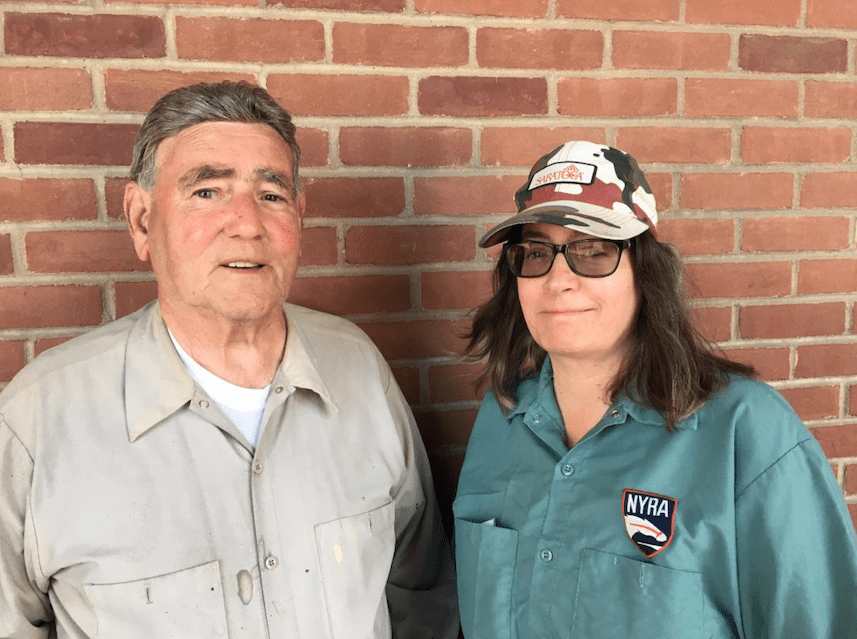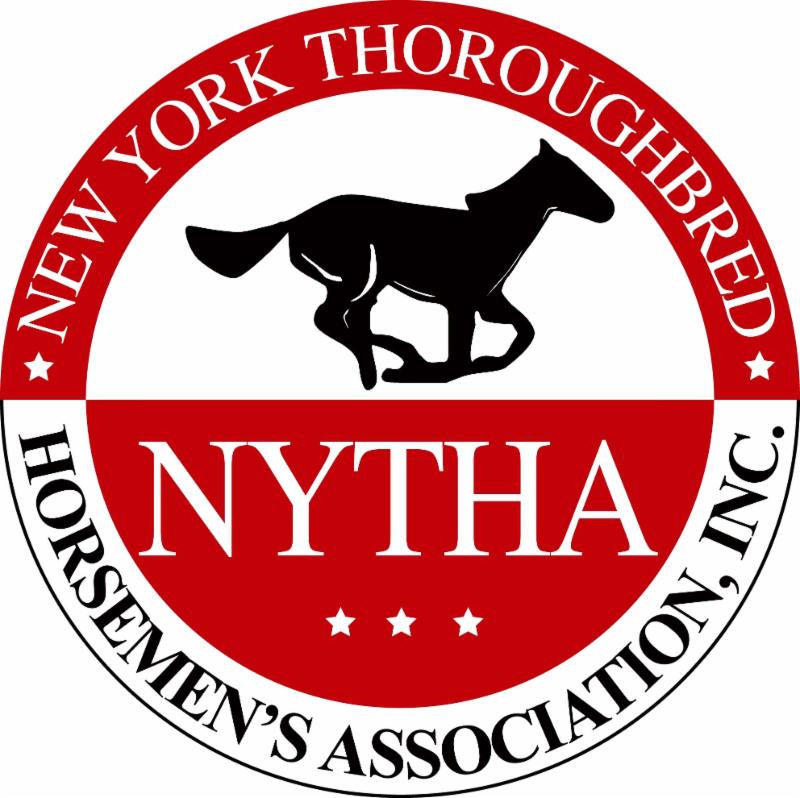
BELMONT, N.Y. – Growing up in Bellerose Terrace in the shadow of Belmont Park, where her father John “Jack” Jones worked as a painter, Jennifer Craig would watch the races most Saturday evenings on Channel 9 with her grandmother, never giving a thought to the fact that she too would one day build a career at the track.
“We watched the racing from Belmont Park and Aqueduct and never missed the Triple Crown races,” said Craig. “We knew the different tracks, the songs they played there and the names of the jockeys. It was part of the fabric of our household. It’s funny but when I started working here, I found I knew a lot of the areas at Belmont Park, based on what we saw on TV and the times that dad brought us to the track.”
Jones’ first day work at Belmont Park was on Belmont Stakes Day with very few people around and mostly quiet except for occasional construction noise.
That isn’t a misprint: The Belmont Stakes that Saturday, June 5, 1965 – 56 years ago this month – took place at Aqueduct Racetrack, while Belmont Park was being renovated. Craig and her twin sister Jacqueline worked several summers at NYRA while in high school. Craig joined the landscaping team full-time in 1983, 38 years ago this summer.
Together, Jones and Craig have logged more than 90 years at NYRA while taking quiet satisfaction that their contributions have helped Belmont Park solidify its status as both a community pillar and one of America’s most iconic tracks.
“Do I take pride in working here?” said Craig, about to answer her own question. “Yes. It’s ingrained. It’s something I was taught.”
Those bright and colorful arrangements of flowers that a national television audience saw on Saturday, June 5 at the Belmont Stakes presented by NYRA Bets? Credit Craig, Landscaping Supervisor Evan Harmon and the rest of the NYRA landscaping team.
And the backgrounds of many other areas that help make Belmont Park retain its place as a premier destination for racing fans? Give a shoutout to Jones and his paintbrushes.

“Jack and Jenn, you never had to wonder if they’ll be here or not,” said Frank Donroe, the NYRA facilities manager. “They both have a strong work ethic and do their jobs exceptionally well. We’re fortunate they’re with us and using all their experience to help Belmont Park look good.”
The longevity of the Jones family in New York racing actually goes back not just two generations, but three. Jones’ father-in-law and Craig’s grandfather, Terry McGovern, worked as a valet on the New York circuit, and served as a guide to Jones when he started at Belmont Park. For Jones, it’s another connection to the track that extends all the way to when he was a kid growing up in Bellerose Terrace and hopping the fence to the track with his friends.
“Who could ever have predicted that I’d end up working here, let alone for more than 50 years and be joined by Jenn,” said Jones, who started at NYRA on the gardening team and moved to the “paint gang” three years later; for a time in the 1970s, he also served on the ambulance crew. “I can walk around Belmont Park – and not just the grandstand but the backyard, areas around the train platform and barns and cottages on the backstretch – and see the places I’ve worked. That’s special.”
For both Jones and Craig, Belmont Stakes Day is an annual priority, a day they start planning for weeks ahead of time. “In preparing for the Belmont Stakes, I always spend a few weeks with a wagon and going around the track, touching up here up and painting there, getting to areas you see on television as well as areas you don’t see,” said Jones. “After all these years, I know the places that need a little work.”
For Belmont Stakes Day, Craig and the landscaping team focused on building flower arrangements in and around the paddock, winner’s circle, backyard and clubhouse. In particular, keep an eye out on Saturday for planters of colorful arrangements where the horse path meets the paddock.
Jones and Craig credit an environment in which they perform a blend of the work they’re assigned and are a free to pursue assignments that they suggest.
“Creativity is really respected here, and I find I take a lot of what I’ve learned here and combine it with I’ve picked up on my own,” said Craig. “I feel we have a good knowledge of what works best.”
Craig prefers flower arrangements with colors that match – “not pinks and oranges, but reds, whites, purples and pinks,” she said.
Craig recalled the weeks leading to the 2015 Belmont Stakes – when she had a feeling American Pharoah would prevail – and thinking of what would work best. She and the landscaping team chose the patriotic red, white and blue – which, she said, “somehow seemed appropriate.”
Karma? Perhaps. Before an ecstatic crowd of 90,000 and millions more watching on television, American Pharoah became the first Triple Crown winner in 37 years.
There was no Triple Crown last Saturday, but the Belmont Stakes was still special – or as Jones put it, “extra” special in helping New York celebrate its emergence from a challenging year.
“It’s really important that Belmont Park looks good this year,” he said. “I’m happy to take a small role in that.”

Five furlongs with … Dionne Johnson
The New York Thoroughbred Horsemen’s Association offers a scholarship program to qualified backstretch employees and their direct dependents to further their educational careers. This month’s edition of five furlongs talked to Dionne Johnson, who serves as the NYTHA business manager, about the history of the scholarship program and what the committee looks for when awarding opportunities to assist students ready to take the next steps in their scholastic endeavors.
The NYTHA Scholarship Committee awards scholarships to qualified backstretch employees and their direct dependents. How important has this program been in furthering the education for members of the backstretch community?
“The NYTHA Scholarship Program has a meaningful impact on the lives of the backstretch community, who are the backbone of the racing industry. Many of these students are the first in their families to attend college. Receiving a scholarship grant from NYTHA allows them the opportunity to realize the dream of a college degree.”
What are the attributes the committee factors in most heavily when deciding to award a scholarship?
“Education is an investment and the key to success. The Committee looks for students who realize the importance of education when deciding to award a scholarship.”
The required written essay is limited to 300 words – in such a short summary, what is the committee looking to learn from students about why they are requesting the scholarship?
“The Scholarship Committee is looking to learn from a student why they believe they are the best candidate to receive a scholarship grant from NYTHA.”
Personal interviews with the scholarship committee are required for new applicants. How important is this step in the process to help better understand the individual students who are applying?
“Personal interviews are a great way to know more about a student on a personal level. It also allows the Committee to ask follow-up questions regarding a student’s long-term goals, community service, hobbies, etc.”
When did the NYTHA Scholarship Program first start and how has it grown over the years?
“Twenty years ago, NYTHA distributed a total of $78,000 in scholarships to less than 20 students. Twenty years later, NYTHA’s scholarship program has a budget of $200,000 and provides scholarships to more than 40 students annually. Since 2008, NYTHA has distributed over $1.8 million in scholarship grants to 524 students. Our students have become veterinarians, nurses, surgical technicians, teachers, police officers, physical therapists, and a female pilot for Jet Blue.”
Please note: The 2021-2022 scholarship application submission period is now closed. For a 2022-2023 scholarship grant, on-line applications will be available in February 2022.
To apply for a NYTHA scholarship application go to: https://nytha.com/at-work/education/2021-scholarship-application/
NYRA Press Release
Photo: John “Jack” Jones (left) and daughter, Jennifer Craig


